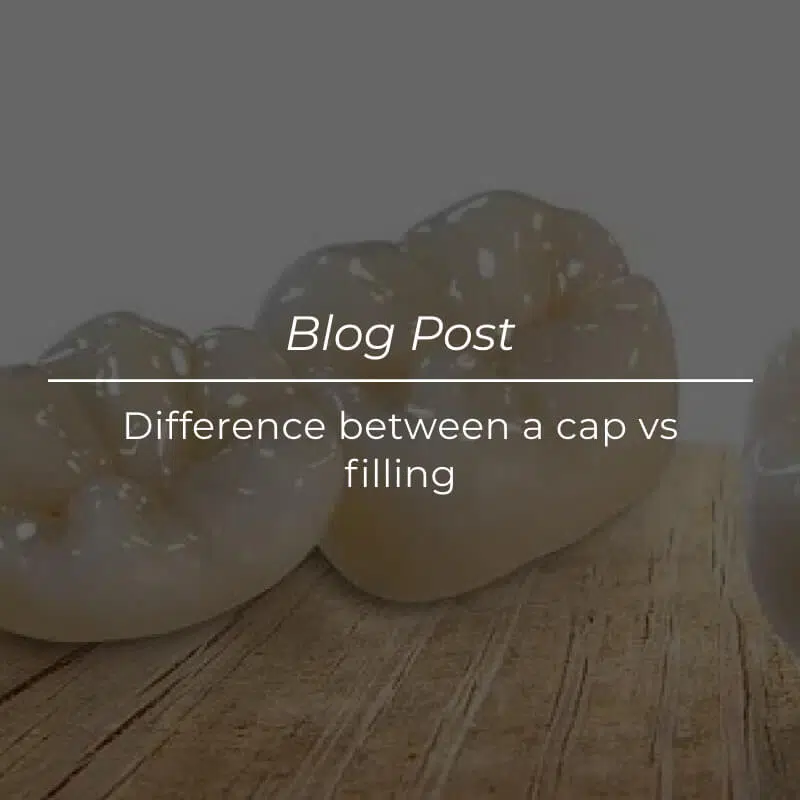-
Mon- Sat 08:00-18:00
-
Call Us Now 1300 99 1300

Always wondered what the dentist meant when they started mentioning caps or crowns? Or maybe you want a little more information on what a white filling is and what the difference between caps and fillings really are? If this is you, look no further.
Crowns or “Caps”:
Crowns, or caps as they are sometimes known, are restorations that are custom made for each patient and each tooth. They can protect or improve the appearance of your teeth and strengthen weak, cracked or decayed teeth. They also help to repair badly damaged teeth that may be chipped or discoloured and can even fix broken down fillings. A versatile dental crown returns teeth to their natural colour and shape and covers them above the gum line. They can be used on any tooth and can reshape your teeth to enhance your smile!
Fillings:
Modern white fillings may differ to what your saw as a child or what your parents may even have today! In the past, silver amalgam – or even mercury – were used for fillings and they were extremely visible in the mouth. Not only that, but they were generally aesthetically unattractive.
Nowadays, white fillings come in a very natural finish that is aesthetically pleasing and doesn’t use mercury. These are easily molded and don’t contribute to worse long-term dental health like the older silver fillings.
Fillings are used to seal cavities and involves drilling of the cavity to remove any decaying tooth or damaged material. Unfortunately, this can sometimes cause pain in patients. However, with the new modern composite white filling, less of the tooth needs to be removed to put in place a dental filling.
According to Care Family Dental Toorak dentist, when looking at the difference between getting a cap and a filling, there are a few things you should consider. Generally, for minor tooth decay (like from drinking a few too many sugary drinks), a dentist will use a dental filling. A filling can be completed in one visit and might only cost a fraction of the price of a crown. But, fillings can break which may force you to make appointment after appointment to fix them. Crowns generally strengthen your own tooth and can be custom shaded to match the color of your other teeth.
Whatever dental solution you need, your dentist will be able to help with any questions and figure exactly what your teeth require for the ultimate smile!
Our dental clinics are spread across Melbourne and we service patients across Melbourne in areas such as Toorak, South Yarra, Malvern, Braybrook, Port Melbourne, Albert Park, Templestowe, Armadale, and other surrounding suburbs.
Choosing between a dental filling and a dental crown depends on factors like cavity size, tooth condition, broken or cracked teeth, and previous root canal treatment. Fillings are suited for smaller cavities, while crowns are ideal for larger cavities, structurally compromised teeth, broken or cracked teeth, and teeth following a root canal. Your dentist will assess these factors to determine the most suitable treatment.
Dental crowns (or caps) and fillings serve different purposes in dental care. Dental fillings are used for smaller cavities by removing decay and filling the space, preserving natural tooth structure. Dental crowns are reserved for extensively damaged or weakened teeth, offering protection, strength, and improved appearance. They may replace large fillings if a tooth’s structure is compromised. Consult your dentist for the best treatment option based on your tooth’s condition to ensure long-term dental health.
In certain situations, a tooth may necessitate both a filling and a crown. The tooth’s specific condition determines this:
The decision hinges on the tooth’s state and the dentist’s evaluation, ensuring its long-term health, function, and appearance.
Dental filling and crown costs vary due to materials, tooth location, and dentist fees. In general, crowns are pricier for several reasons:
Dental crowns are essential for several reasons:
Crowns are tailored and can be made from various materials, chosen based on tooth location and patient preferences. They ensure functionality, prevent further damage, and enhance aesthetics when needed.
A minimum of two millimetres of healthy tooth structure is typically required to place a dental crown. This means that at least one-quarter of the visible portion of the tooth must be present and in good condition to support the crown effectively; in cases where less than this is available, it might not provide ample room for restoration or could potentially lead to complications, including fracture risk.








